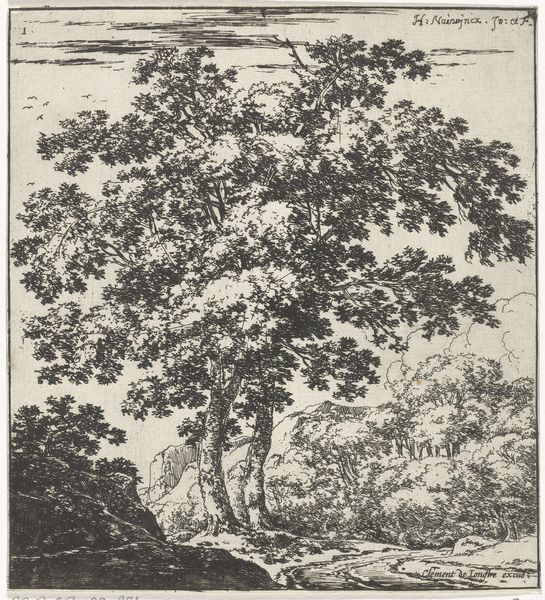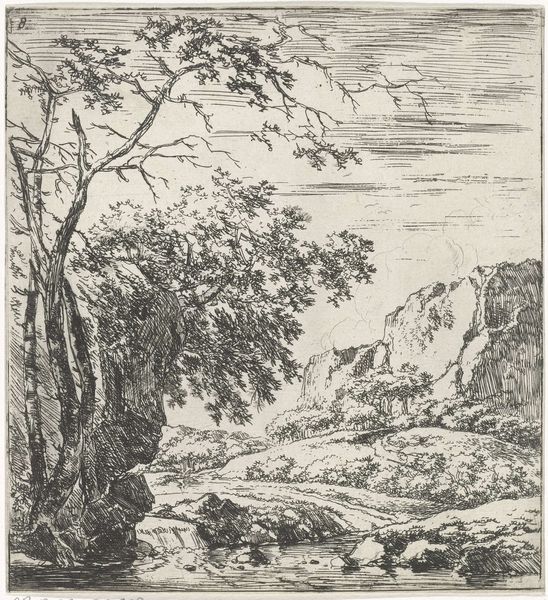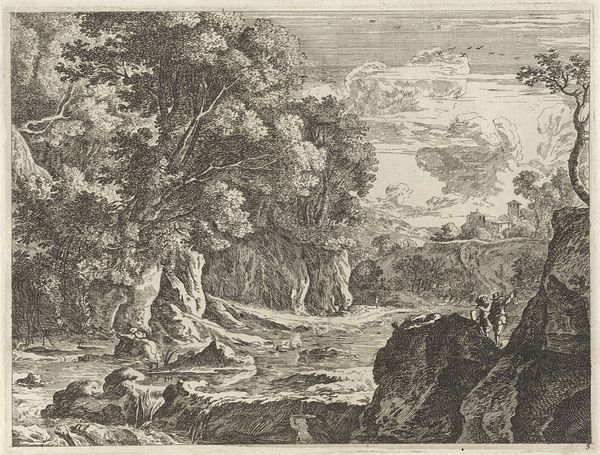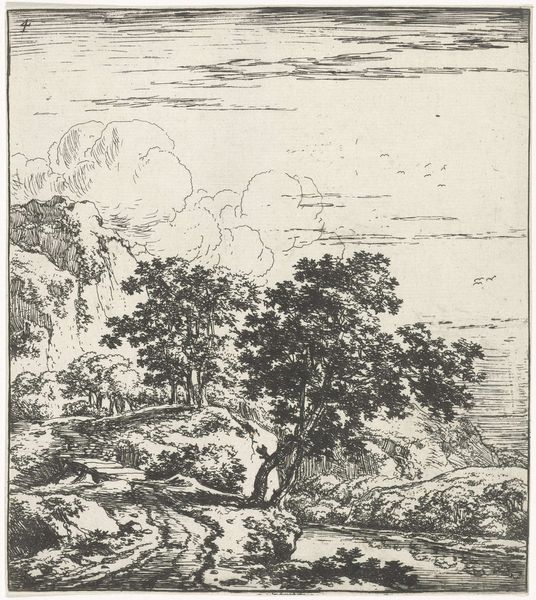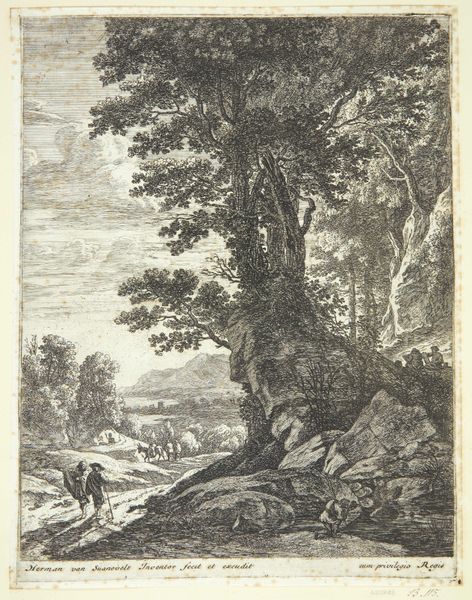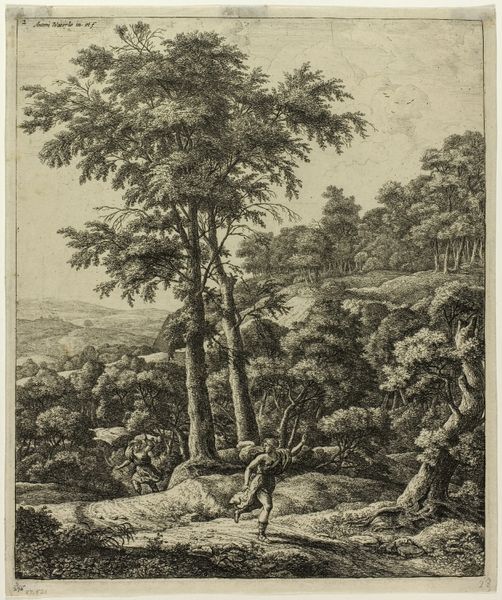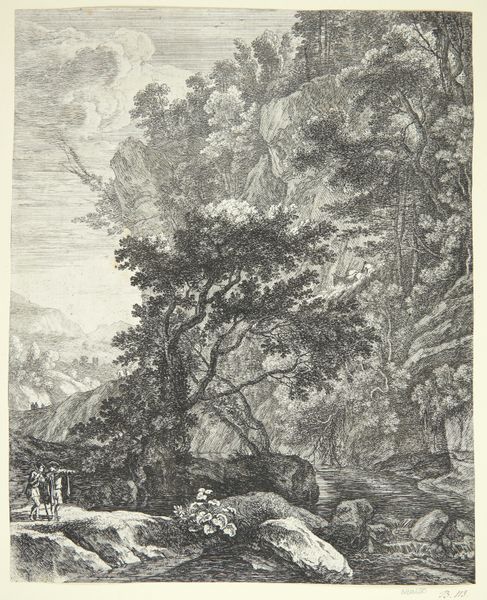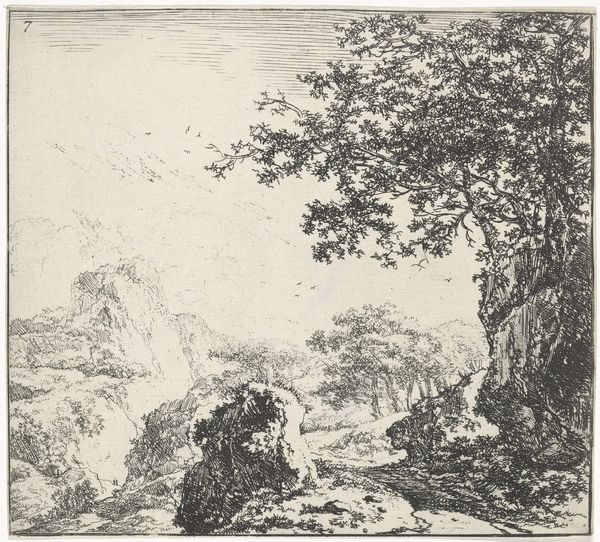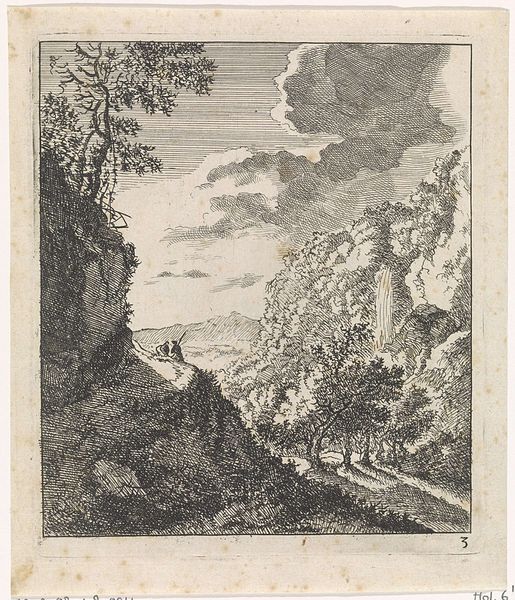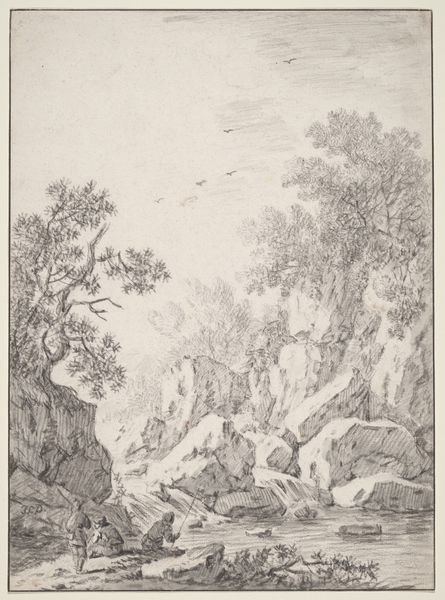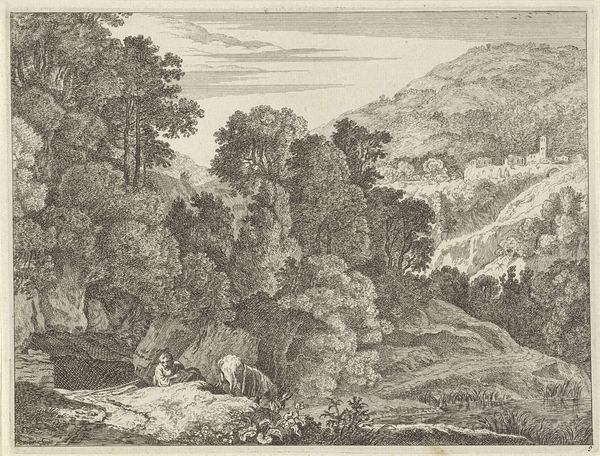
print, etching
#
dutch-golden-age
# print
#
etching
#
old engraving style
#
landscape
#
realism
Dimensions: height 131 mm, width 119 mm
Copyright: Rijks Museum: Open Domain
Editor: Here we have Herman Naiwincx’s “Beek tussen de rotsen,” or “Brook Between the Rocks,” an etching dating sometime between 1633 and 1670. It’s quite a contrast in textures, isn’t it? You have the smooth sky and water, then the jagged rocks and the dense foliage. What stands out to you the most about this landscape? Curator: What immediately grabs my attention is the labor invested in creating this image. Think of the copper plate, meticulously etched to create these lines. Etching isn't just about representation, it’s a process of immense material engagement, controlling acid and metal to render a landscape. Look how the artist varies the density of the marks. Editor: So, you’re seeing the physical act of creation, the choices in technique? Curator: Precisely! And how those choices reflect a certain attitude towards nature. Dutch Golden Age landscapes weren’t just pretty scenes. They represented ownership, control over the land. Now, think about the availability of prints like these: how does the materiality of the print medium – its reproducibility, its accessibility – factor into who gets to “own” the landscape? Who consumes these images? Editor: That's interesting! I hadn’t considered how the accessibility of the medium might affect the perception and ownership of the landscape depicted. It becomes less about aristocratic ownership of the physical land and more about a wider societal engagement. Curator: Exactly. The print, in essence, democratizes the landscape. It shifts from the terrain of the wealthy to the visual property of a wider audience. Now, let's talk about the paper itself. Its cost, its source – these things are integral to the story the artwork is telling. Editor: It's fascinating how focusing on the materiality can reveal such a deeper cultural context! Thanks, I'll never look at etchings the same way again.
Comments
No comments
Be the first to comment and join the conversation on the ultimate creative platform.

